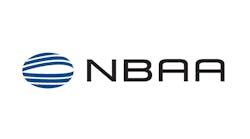Production Tooling and FAA Approval for Cirrus-Sized Turboprop
Not many General Aviation (GA) enthusiasts have ever heard of an Interceptor 400. It’s been years since the pressurized, retractable, single-engine turboprop was designed and built after being certified by the U.S. Federal Aviation Administration (FAA). Now, after being carefully stored in obscurity on a farm in Wichita, Kansas, the FAA Type Certificate and tooling to build it have reemerged on the market.
Shortly after the Interceptor 400 was certified and a few built in the 1970’s, the manufacturer had some liquidity issues and ceased production. Compounding this, the aircraft was ahead of its time, certified a decade before the appearance and market acceptance of single-engine turboprops. Remarkably, it’s now quite relevant in today’s market, fitting squarely in an unfilled product niche between high-performance piston aircraft like the Cirrus SR22 series and much larger single-engine turboprops like the Pilatus PC-12 and Daher TBM series.
The aircraft uses 400 horsepower from of its single Honeywell TPE331 turboprop engine, which is capable of producing 840. This catapults the aircraft to a 244 knot typical cruise speed at up to 24,000 feet with 900 nautical miles range. It seats 3 passengers and the pilot in a pressurized cabin. Maximum speed is 266 knots, or 300 miles per hour.


